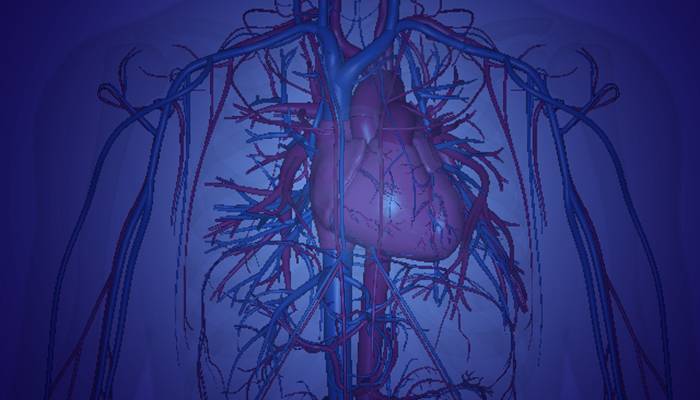Understanding the cardiovascular system is important for making medical decisions, exercising efficiently, and choosing a diet. The cardiovascular system, also known as the circulatory system, is usually covered in basic biology. However, for those of us who have forgotten, or never paid attention in the first place, it is important to get a refresher and begin to understand how to apply knowledge of the cardiovascular system to our adult lives.
The cardiovascular system consists of the heart, blood vessels, and, in an adult, four or five liters of blood. The heart is a muscle about the size of a fist that constantly pumps blood throughout our bodies. Blood vessels may be further broken down into arteries and veins. Arteries are thicker, more muscular, and carry oxygenated blood into muscles and organs. This oxygenated blood allows our muscles to contract and our organs to operate normally. Veins are slightly weaker and depend on gravity and muscular contractions around them to help return blood to the heart once the oxygen and nutrients have been depleted. The blood being transported consists of red blood cells, white blood cells, platelets, and plasma. Red blood cells make up about 45% of blood and are used to transport oxygen. White blood cells are much fewer in number but they help fight various infections. Platelets are cell fragments that help blood clot, and plasma is the noncellular liquid that blood flows through. It helps fight disease and maintains proper hydration of cells throughout the body.
Human life depends on a healthily functioning cardiovascular system. Without a constant supply of fresh oxygen and nutrients to the rest of your body, particularly your brain, you would die within minutes, and in fact, cardiovascular disease is a leading cause of death. However, getting your cardiovascular system to function more efficiently does more than prevent death. It greatly improves your quality of life by increasing your ability to be active, fight disease, and heal yourself from minor wounds.
Knowing the parts of the cardiovascular system and how they operate is just one step in keeping maintaining your cardiovascular health. It is also important to know what cardiovascular diseases are common and how to help prevent them. Most types of cardiovascular disease are caused by atheroma, which is a build up of fatty deposits on the walls of the arteries. This can restrict blood flow, and cause strokes, heart attacks and blood clots. Several factors increase the risk of cardiovascular disease. Lifestyle choices such as smoking, excessive drinking, an unhealthy diet high in salt or cholesterol, and a lack of exercise can all be changed by you. Treatable factors include obesity, kidney disease, high cholesterol, high blood pressure, and diabetes. Risk factors beyond your control include age, sex, ethnicity, and family history.
Although many of the risk factors for cardiovascular disease may seem out of your hands there is a lot that you can do to control your risk by mitigating the lifestyle risk factors and dealing with treatable risk factors as soon as possible. For starters you can increase your activity level. Make sure you are getting at least half of hour of moderate to heavy aerobic exercise every day. For some people this can be as simple as a brisk walk. If you are already in healthy aerobic shape try challenging yourself with slightly more demanding activities such as running, cycling, or playing soccer. Besides being active it is important to reduce your stress levels by having time for relaxation and recovery. Try to have 15-30 minutes of time each day to meditate, pray, or relax in some other way.
After getting active and establishing a pattern for relaxation it is important to tackle your diet. Make heart healthy choices that are low in negative types of cholesterol and salt. Try to eat whole foods and plenty of fruits and vegetables as well as fish. Cut back on alcohol and limit yourself to drinks that help your heart such as the occasional glass of red wine. While you are at it, cut smoking completely out of your life.
These are just a few examples of things that you can do to maintain your all-important cardiovascular system. After understanding what it is and how it works make sure that you take daily steps to protect and strengthen it for a long and healthy life.
